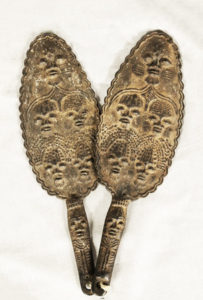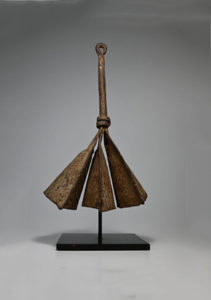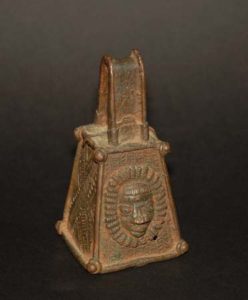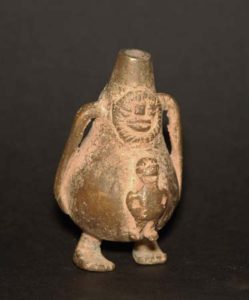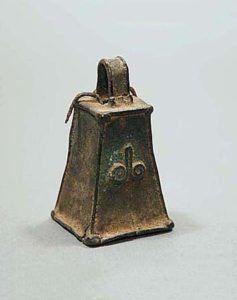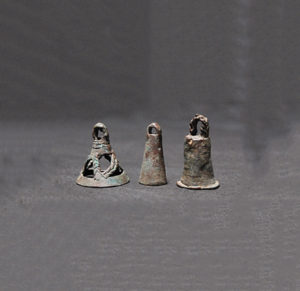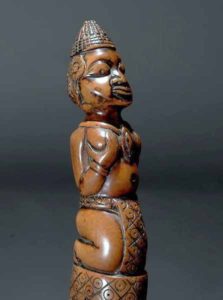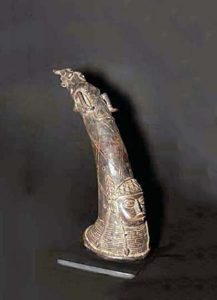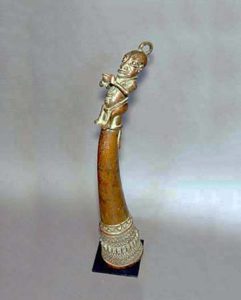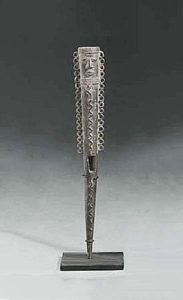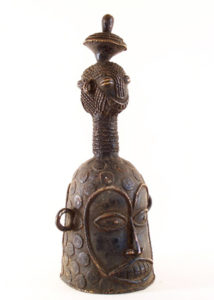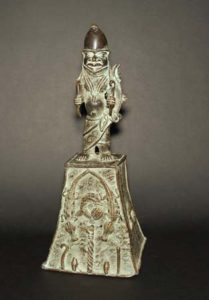The people living in the Benin kingdom are a mixture of many cultures. Originally, the Edo people, who inhabited the area, became displeased with their ruler and invited an Ife prince to rule instead. The son of the Ife prince became the first Oba (king) of Benin, but local chiefs still had ultimate control to make decisions. In the late 13th century, Oba Ewedo would be the first king to assert his power and display absolute authority.
In the 15th century, the kingdom of Benin was expanded to a large empire under the rule of Ewuare the Great. Also during this time, the Portuguese brought Christianity to the Benin Empire. Oba’s and their chiefs were made Catholic priests. They were encouraged to dress in the traditional regalia and continue to do so today.
In the late 1800’s, the British invaded and captured Benin City. In 1897, an army of British soldiers raided Benin City, and over 2500 religious artifacts and pieces of art were looted and sent to England. They began auctioning off the artwork to cover the war expenses, some spreading to European museums.
Unlike other cultures, the people of the Benin kingdom did not create tribal art, it was ordered to be made by the Oba. Using the lost-wax casting method, beautiful brass heads and plaques were displayed throughout the palace as well as sculpted ivory and terracotta. Some pieces guarded the palace doors while others were placed on altars to honor ancestors where sacrifices were often made.
The leopard is repeatedly portrayed in Benin art. “The leopard of the house” is frequently used to describe the oba, signifying his mastery over the wilderness and his powerful presence. Soldiers of the royal court were often adorned with small ivory or brass trinkets they attached to their waistband and uniform. This was to show their prestige and power in the community.
Source:
Baquart, Jean-Baptiste. The Tribal Arts of Africa. New York: Thames and Hudson Inc.

